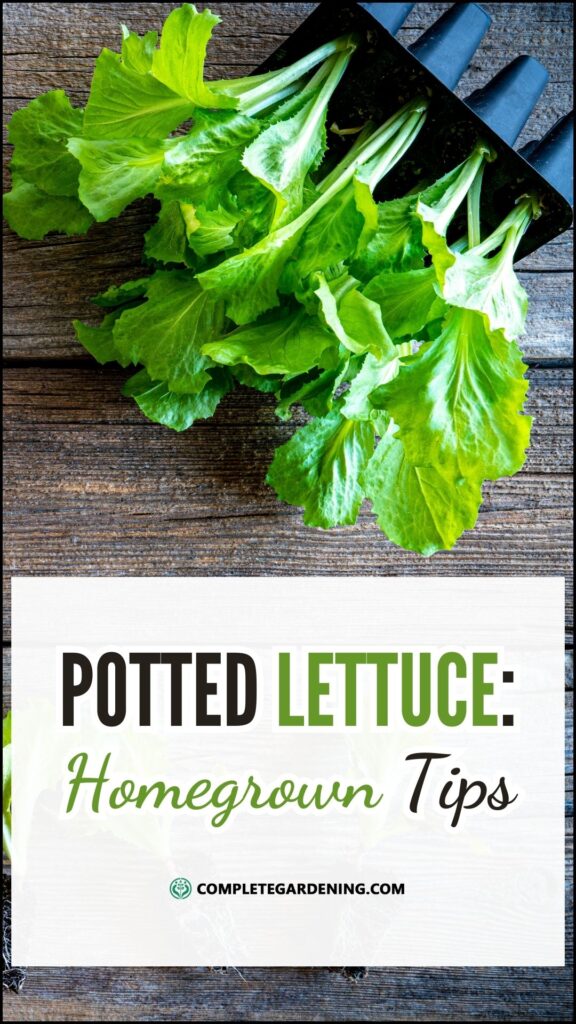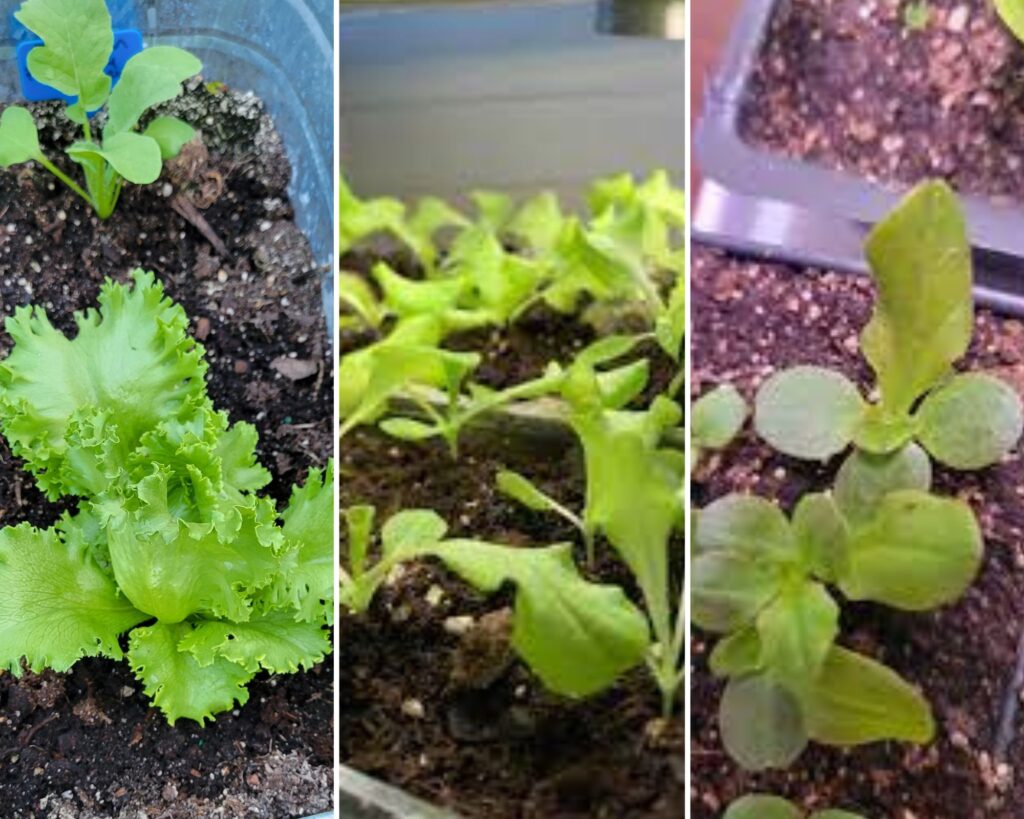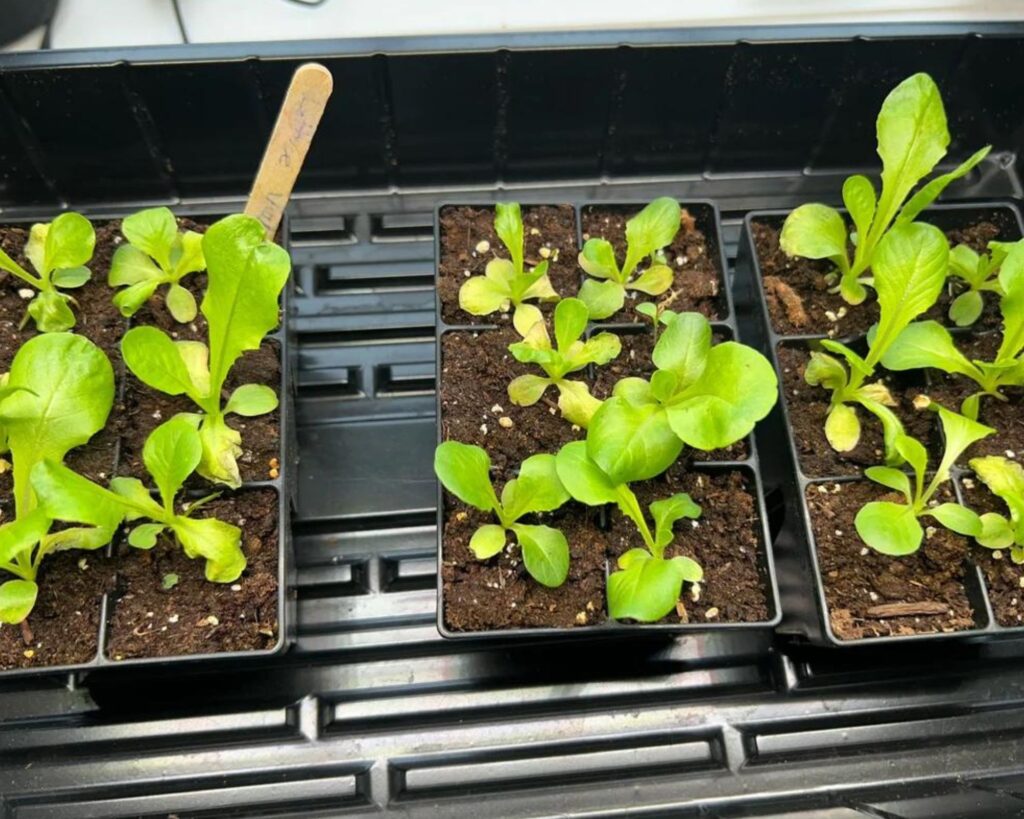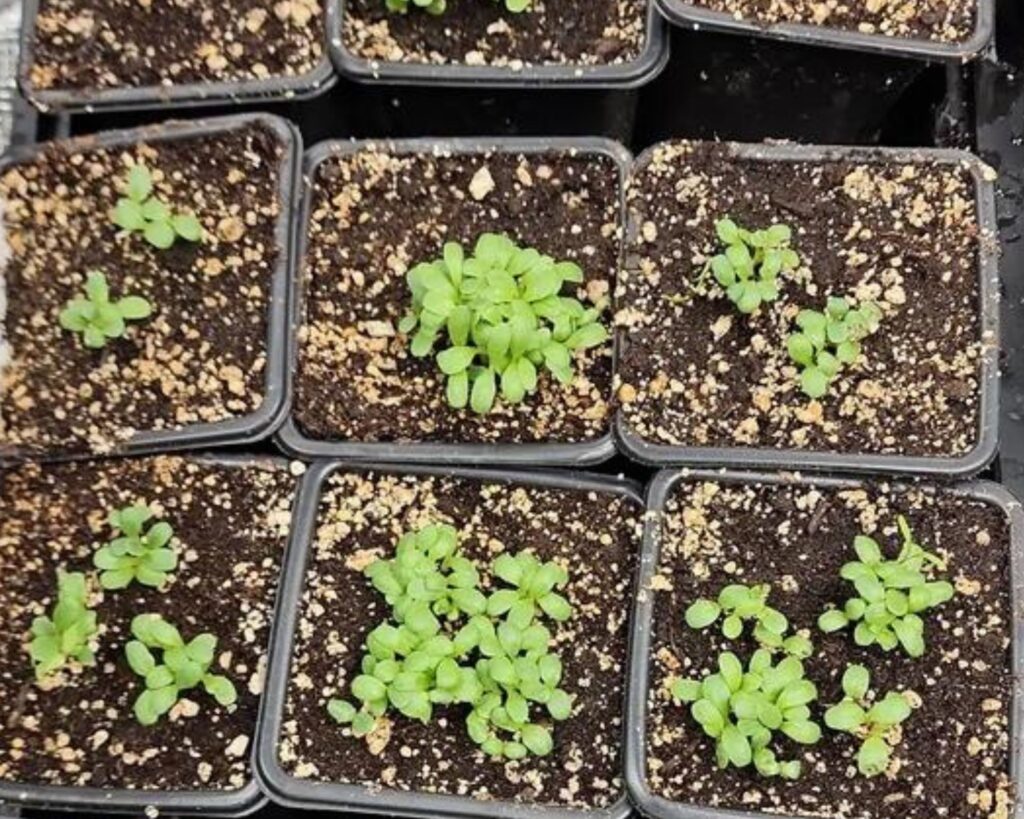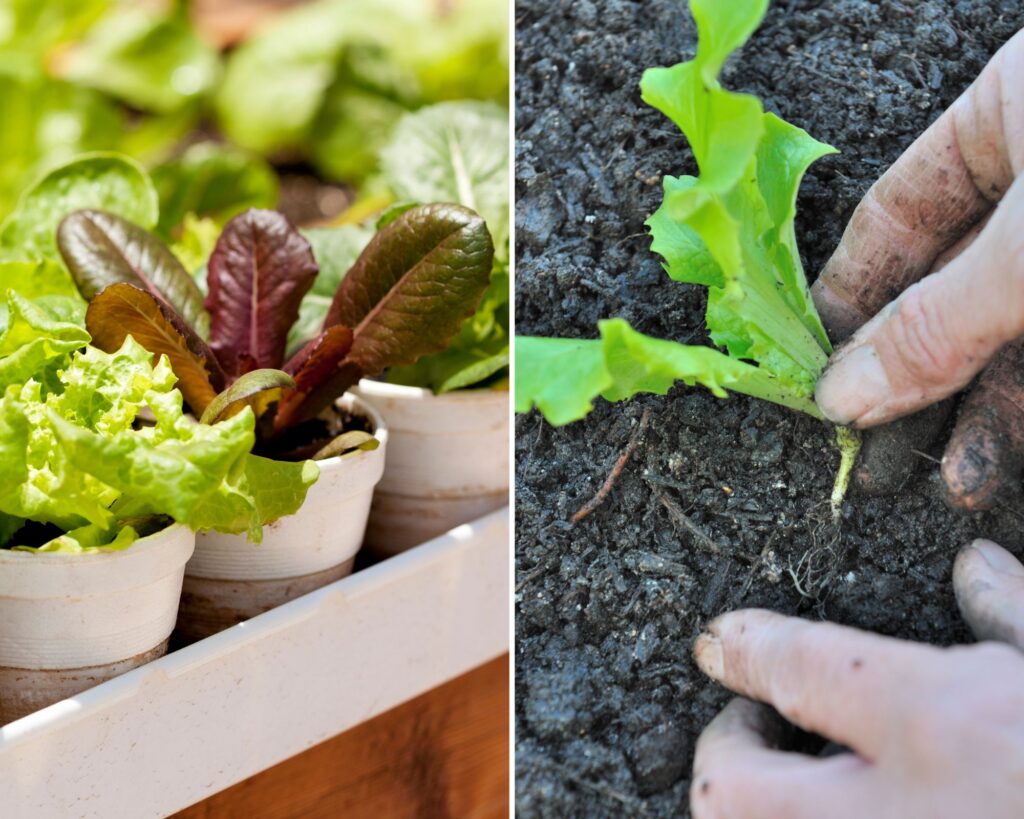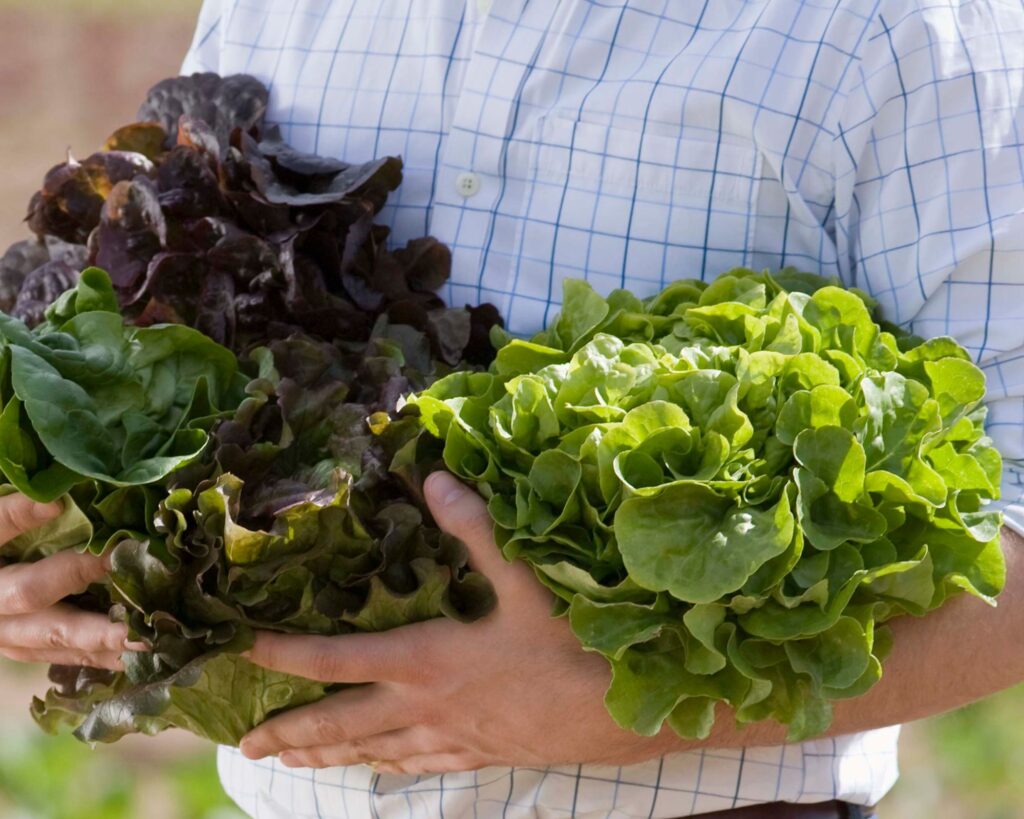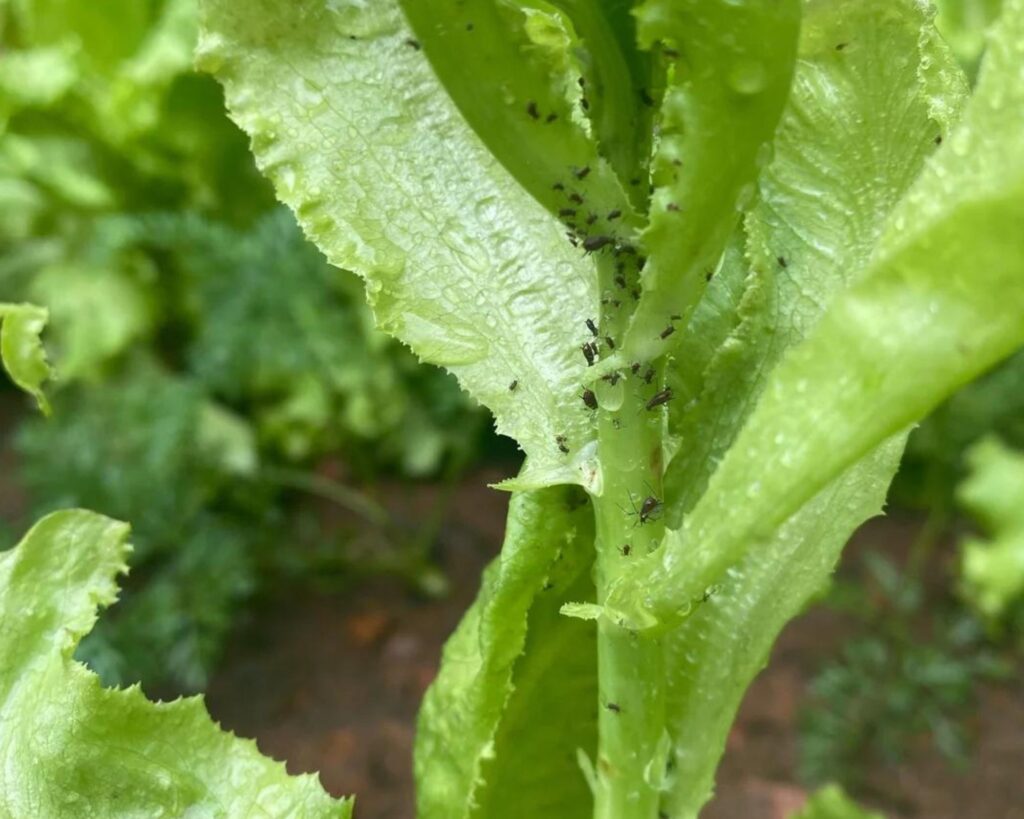Imagine plucking fresh, crisp lettuce from a pot right in your home. Growing lettuce in a pot is easy and incredibly rewarding, even if you’re a beginner. With just a few simple steps, you can enjoy a fresh supply of homegrown lettuce for your salads and sandwiches.
All you need is a pot, some soil, and a sunny spot. Lettuce thrives in small spaces, making it perfect for apartments or homes with limited outdoor space. Whether you have a windowsill, balcony, or patio, there’s always a place for a little lettuce garden.
Plus, you’ll love the convenience of having fresh greens at your fingertips. There’s something special about knowing exactly where your food comes from and taking pride in growing it yourself. Let’s get started on your journey to fresh, homegrown lettuce!
Choosing the Right Pot
Choosing the best pot for growing lettuce involves thinking about size, depth, and material. These factors can make a significant difference in how well your lettuce grows.
Size and Depth Considerations
A pot for growing lettuce should be at least 6-12 inches deep. Lettuce doesn’t need extremely deep pots, but having enough room for the roots to grow can benefit the plant.
Diameter is also crucial. Aim for a pot that is at least 8-10 inches wide. This gives each lettuce plant enough space to spread out.
Using a shallow but wide pot can allow you to grow multiple lettuce plants in one container.
Material Benefits
Different materials can affect factors like drainage, weight, and durability. Plastic pots are usually lightweight and affordable. They retain moisture well but may need more frequent watering.
Terracotta pots are more breathable, promoting better air circulation. They can dry out faster, though, so you might need to water your lettuce more often.
Metal containers add a modern touch but might heat up too much in the sun. This can stress the lettuce, so consider using them in shaded areas. The choice of material can impact your watering schedule and overall plant health.
Selecting Lettuce Varieties
When choosing lettuce varieties to grow in pots, consider growth habits and climate adaptability. Certain types thrive better in container gardening and are more resilient in varying temperatures.
Crisphead Versus Loose-Leaf
Crisphead lettuce is known for its dense, crunchy heads. Varieties like Iceberg require more care and are slower to mature. They’re ideal if you’re patient and have a cooler growing environment.
Loose-leaf lettuce, such as Black Seeded Simpson and Oak Leaf, grows quickly and doesn’t form heads. This type is easier to harvest and can be picked leaf by leaf. It’s perfect for those who prefer continuous harvests.
If you’re limited on space, loose-leaf varieties make efficient use of smaller pots.
Heat Tolerant Types
In warmer climates, select heat-resistant lettuces to avoid bolting, which leads to bitter leaves.
Butterhead varieties, like Buttercrunch, tolerate heat better and have a softer texture. These types hold up well in warmer conditions without compromising flavor.
Romaine lettuce is another excellent option. Varieties like Parris Island can withstand higher temperatures and still produce crisp, tasty leaves.
Consider using shade cloths and consistent watering to further manage temperature impact on your lettuce.
Soil and Fertilization Essentials
Choosing the right soil mix and ensuring proper fertilization are crucial for growing healthy lettuce in pots. It’s important to create an optimal growing environment and consistently provide necessary nutrients.
Preparing the Potting Mix
Start with a light, well-draining potting mix to ensure your lettuce plants thrive. A mix containing peat moss, perlite, and compost provides a good balance of moisture retention and drainage.
- Peat Moss: Helps retain moisture and keeps the soil loose.
- Perlite: Improves drainage and aeration.
- Compost: Adds organic matter and nutrients.
Pro tip: You can enhance your potting mix by adding worm castings or coconut coir.
Nutrient Requirements
Lettuce needs a steady supply of nutrients. Regular fertilization supports healthy growth and maximizes yield.
- Nitrogen: Essential for leafy growth. Use a balanced 10-10-10 or 5-5-5 fertilizer.
- Phosphorus: Important for root development.
- Potassium: Helps in overall plant health.
Apply a liquid fertilizer every two weeks, or opt for a slow-release granular fertilizer. Avoid over-fertilizing as it can lead to nutrient burn.
Planting Your Lettuce
Growing lettuce in a pot at home starts with choosing whether to sow seeds directly or transplant seedlings. Both methods have unique steps that ensure healthy growth.
Sowing Seeds
Begin by choosing a suitable pot with good drainage holes. Fill it with high-quality potting mix that’s rich in organic matter. Make shallow grooves about 1/4 inch deep and sprinkle the lettuce seeds. Cover them lightly with soil.
Water evenly but avoid soggy conditions to prevent rotting. Place the pot in a location where it gets 4-6 hours of direct sunlight daily. Maintain consistent moisture by misting the soil surface slightly each day.
You’ll see sprouts in 7-14 days. Thin the seedlings once they reach about 2 inches tall, leaving the strongest plants spaced about 4-8 inches apart to allow room for growth. Keep monitoring the soil moisture and sunlight levels.
Transplanting Seedlings
When transplanting, start with healthy seedlings that have 2-3 true leaves. Prepare a pot with well-draining soil, enriched with compost. Make planting holes slightly larger than the seedling root balls.
Gently remove each seedling from its original container, taking care not to damage the roots. Place each seedling into the prepared holes and firm the soil around them to remove air pockets.
Water the transplanted seedlings immediately to help them settle. Position the pot in a sunny spot and ensure they receive at least 4 hours of sunlight per day. Check the soil’s moisture level regularly, keeping it evenly moist but not waterlogged.
By following these steps, you’ll be well on your way to growing lush, home-grown lettuce.
Optimal Growing Conditions
Providing the right amount of water and ensuring appropriate sunlight and temperature are crucial for growing lettuce successfully in a pot at home.
Watering Schedule
Lettuce prefers evenly moist soil. It’s essential to water your lettuce regularly, but overwatering can lead to root rot.
Use a soil moisture meter to monitor the soil’s moisture levels. Water your lettuce when the top inch of soil feels dry to the touch. Aim to water deeply, allowing the water to reach the root zone.
You may need to adjust your watering schedule based on the season. For example, you might need to water more frequently during hot, dry weather to maintain soil moisture.
Sunlight and Temperature
Lettuce thrives in cooler temperatures, ideally between 60°F and 70°F (15°C to 21°C). It can tolerate some shade but requires at least 6 hours of direct sunlight each day for optimal growth.
Place your potted lettuce in a spot where it will receive morning sun but be shaded during the hottest part of the day. This helps prevent the plants from bolting, or going to seed, too quickly.
Using a shade cloth may be beneficial during hotter months to protect your lettuce from excessive heat. Also, be mindful of sudden temperature drops and consider bringing pots indoors if a frost is expected.
Harvesting and Aftercare
You’ve nurtured your lettuce, and it’s now time to harvest and ensure it stays healthy. Using specific harvesting methods and managing pests and diseases are crucial steps to enjoy fresh lettuce all season.
Cut-and-Come-Again Technique
The cut-and-come-again technique allows you to harvest leaves while letting the plant continue growing. Use sharp scissors to trim the outer leaves, leaving the inner part intact. This method ensures a continuous supply of fresh greens.
It’s best to cut the leaves when they are young and tender, around 3-6 inches tall. This ensures that the plant maintains its growth and vigor. Harvest in the morning when the leaves are crisp and hydrated.
Pest and Disease Management
Pests like aphids and slugs can be detrimental to your lettuce. For aphids, use a mild soap solution to spray the leaves. Removing debris and maintaining dry soil can prevent slug infestation.
For disease management, proper airflow and avoiding overhead watering reduce fungal issues. If you notice any infected leaves, remove them promptly to prevent spreading. Regular inspections ensure early detection and treatment.
Maintaining a clean grow area and rotating crops each season can keep pests and diseases at bay. This promotes healthier plants and extends your lettuce harvest period.
Growing lettuce in a pot at home is a simple and rewarding way to enjoy fresh, healthy greens year-round. By following the steps outlined in this guide, you can create an ideal environment for your lettuce to thrive, even in small spaces.
From choosing the right pot and soil to selecting the best varieties and maintaining optimal growing conditions, every effort you put into your lettuce garden will pay off when you harvest crisp, flavorful leaves for your salads and meals.
The satisfaction of picking homegrown lettuce is a journey that not only provides you with nutritious food but also deepens your connection to the natural world. So grab a pot, some seeds, and start your lettuce-growing adventure today. Your salads will never be the same!

